First and Last, but Always?
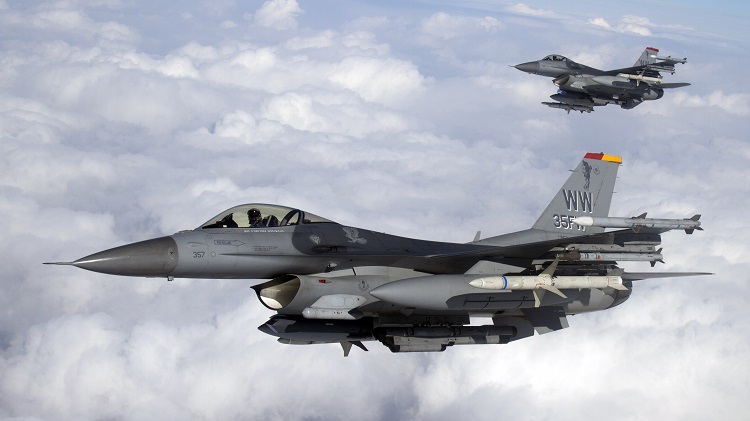
For more than half a century the USAF’s Wild Weasel mission has protected aircraft and aircrew from hostile air defences. But will the USAF’s dedicated Wild Weasel force continue for another 50 years?
‘YGBSM’ was the unofficial motto for the USAF’s Wild Weasel mission during the Vietnam War. The Wild Weasel’s motto comes from an mythical story: an electronics systems officer (ESO) selected to occupy the back seat of the F-100F Super Sabre, the aircraft adopted as the USAF’s first Wild Weasel platform, gave an understandable reaction (“You Gotta Be Sh…..n’ Me”) when briefed on the scope of the mission.
The reason was simple. It was arguably the most dangerous mission airpower had devised. Fighters would troll around the sky waiting to be detected by North Vietnamese Army (NVA) SA-2 surface-to-air missile (SAM) battery’s ground-based air surveillance or fire control radar. When painted by the radar, they would launch a radar-seeking anti-radiation missile (ARM). Hopefully, this would destroy or damage the radar’s antenna, depriving the SAM battery of its electronic eyes and, with that, any hope of engaging aircraft with any accuracy.
The first Wild Weasel missions were flown in 1965. Ever since, the Wild Weasel concept has formed the core of the USAF’s approach to defence suppression, more commonly known today as SEAD (Suppression of Enemy Air Defence).
The US significantly deepened its involvement in Vietnam from March 1965 with the Operation Rolling Thunder air campaign involving heavy attacks on North Vietnamese strategic targets which increased in tempo and severity.
North Vietnam’s response was to enhance its air defences. Hanoi had asked Moscow for an air defence system eclipsing the 16,404ft (5,000m) maximum range of the NVA’s anti-aircraft artillery (AAA. The SA-2 surface-to-air missile, with its maximum engagement altitude of 82,000ft (25,000m) and engagement range of 24.3nm (45km), fit the bill.
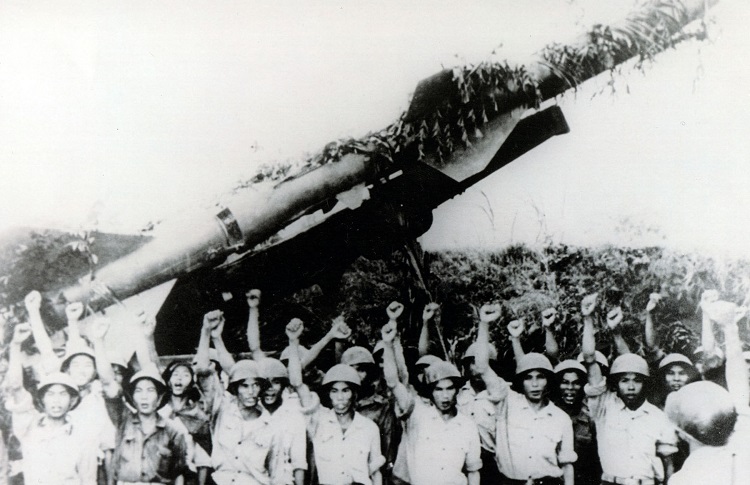
The result was that higher altitudes were no longer a sanctuary for American aircraft. Pilots could try to fly below the 1,500ft (457m) lethal altitude and outside the minimum 4.3nm (8km) effective range of the SA-2, but this put them into the AAA’s engagement envelope.
The SA-2 drew blood for the first time on 24 July 1965 when a USAF F-4C Phantom was shot down and three more were damaged. Operation Spring High was to be the US reaction and, three days later, two SA-2 sites were attacked by USAF F-105D Thunderchiefs with conventional munitions and napalm. 46 F-105Ds took part in the raid, and six were lost.
Spring High proved an expensive way to kill SAM sites. Dummy SA-2 sites, thought to be AAA traps, lured US aircraft into attack before pouncing on them with flak. “They picked the wrong weapons and tactics,” Stan Goldstein, a former Wild Weasel ESO who served in Vietnam and an expert on the Wild Weasel mission told us. This led to a major rethink in the air force on engaging SAM sites. “The need for the Weasel had come about.”
The USAF came up with the idea of configuring several combat aircraft with radar homing and warning (RHAW) receivers which would detect and locate transmissions from the SA-2’s radar. A RHAW was sourced in the form of ATI’s AN/APR-25 radar warning receiver (RWR) and AN/APR-26 missile launch indicator installed on several USAF F-100F Super Sabres.
The ESO, known as the ‘Bear’ in the Wild Weasel community, would monitor the equipment for hostile radar signals and give the pilot the radar’s azimuth and signal strength to help find the target. A strong signal meant that the offending radar was nearby.
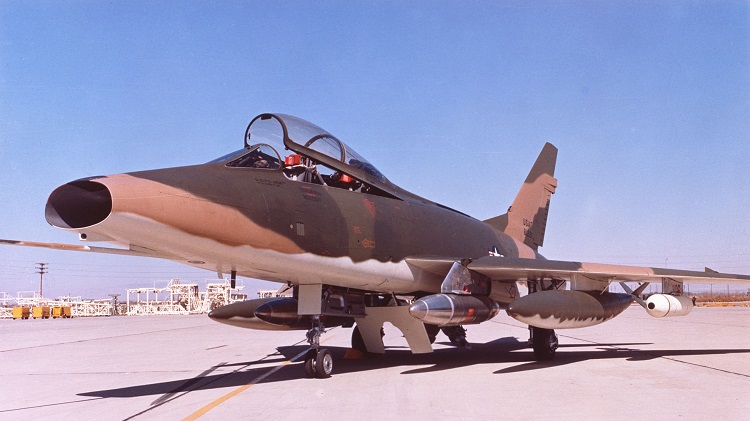
PROJECT WILD WEASEL
Operating in pairs, one aircraft would mark the SAM site with air-to-ground rockets while the other would strafe it with gunfire. Project Wild Weasel, as this SEAD initiative was codenamed, was initiated in November 1965 at Eglin airbase in Florida where the F-100F and AN/APR-26 combination was tested against a simulated SA-2 radar signal on the nearby range.
The F-100F’s missions became known as Wild Weasel-I and commenced in late 1965 from Korat airbase in Thailand. At the time it was reckoned that North Vietnamese air defences had around 24 operational SAM batteries, of
which Wild Weasel-I crews claimed nine. The lessons learned from these early missions included a need for ranging equipment to tell the crew how close they were to a hostile radar and dedicated anti-radar missiles (ARM) to hit it. ARM arrived in 1966 in the form of the US Navy’s Naval Weapons Centre AGM-45 series ARM.
Another lesson from Wild Weasel-I was the need for an aircraft capable of carrying a payload exceeding the 7,040lbs (3,190kg) on the hardpoints of the F-100F. This was satisfied by the F-105F Thunderchief which could carry 14,000lb (6,400kg). The F-105F also had a higher top speed of 1,210kts, compared to the 803kts of the F-100F.
Deployed into theatre from May 1966, the F-105F’s missions were known as Wild Weasel-III (the USAF had tried to adapt the F-4C to the SEAD role under the program designated Wild Weasel-II, but this had been abandoned).
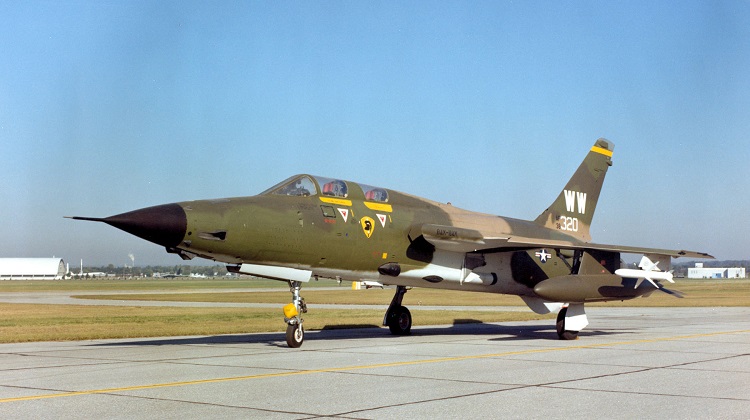
Wild Weasel tactics were also being refined in tandem with improvements in equipment. In these early days “the tactics were evolutionary,” Goldstein said. “You would go in and see what worked. If the tactics and weapons worked, you came back. If they did not, you did not.”
While the F-105F was evolutionary regarding weapons payload, the USAF still wanted more heft. In autumn 1967 it looked to address this problem along with the general wear and tear suffered by the F-105F Wild Weasel-III fleet. The problem was that the F-105F also carried the Westinghouse AN/ALQ-101 jamming pod on one of its hardpoints to electronically attack hostile radars, taking up space that could otherwise accommodate ARMs.
The USAF stuck with the F-105F but converted 64 of the type to the F-105G configuration. The AN/ALQ-101 was split into two and carried in two faired pods on the airframe. Redesignated as the AN/ALQ-105, the jammers were not always popular with Weasel crews as they could blind their radar hunting equipment.
The AN/APR-25/26 which had equipped the Wild Weasel-I/III jets was also replaced with the improved AN/APR-36/37 RHAW. Alongside the new electronics, these jets received the AGM-78B Standard ARM, arguably the most important anti-radiation missile used by the USAF during the conflict. Yet Wild Weasel-III would not be the last incarnation of the mission before the US ended its involvement in the conflict in 1973.
Interest in the F-4C for SEAD was rekindled against a backdrop of F-105 attrition and the air force’s difficulty in supporting an aircraft that had ceased production in 1964. So the F-4C was again adopted by the USAF for Wild Weasel-IV, with aircraft delivered from August 1968.
Together with the F-105Gs, the F-4Cs assisted Operation Linebacker. Starting in May 1972, Linebacker was the US response to North Vietnam’s attempted invasion of South Vietnam which began in the previous March. Key to Linebacker was the use of B-52D Stratofortress bombers against transportation and logistical facilities linking North Vietnam to external suppliers, so the attrition of the NVA’s integrated air defence system (IADS) was a further objective.
The Weasels paid their price during the Vietnam War – between December 1965 and August 1973 48 aircraft supporting the mission were lost. By the time Wild Weasel-1 kicked off in 1965, the US lost one aircraft to an SA-2 SAM for every 10 missiles fired, but by November 1968 this figure had improved to one aircraft lost for every 48 missiles.
After the war, the USAF Electronic Warfare Center concluded that 95 per cent of the SEAD effort during the eight years of overt US military involvement in Vietnam was psychological. ARMs such as the AGM-45 and AGM-78 encouraged NVA radar operators to switch off their systems lest they inadvertently advertise their presence to an ARM. And while a SAM battery bereft of radar coverage might still launch its missiles ballistically, these would be far less effective than acquiring targets and guiding weapons by radar.
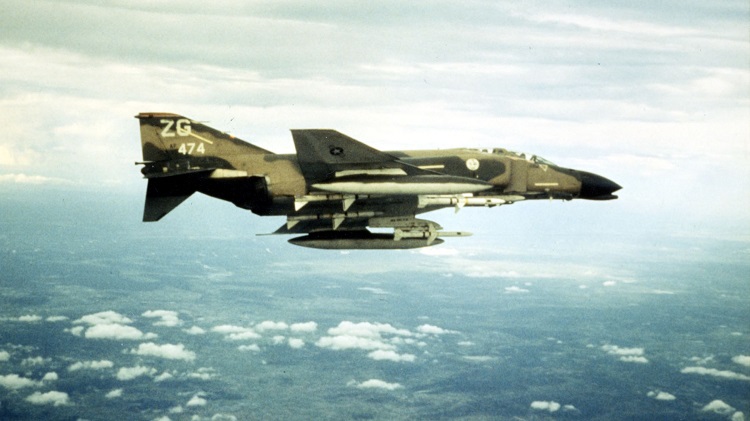
COLD WAR WEASELS
The USAF continued to exploit the Wild Weasel concept as the so-called Second Cold War began in the late 1970s. “The concept is one of the biggest things to come out of the Vietnam War,” Goldstein said, with the SEAD experience built up during the conflict considered its biggest selling point.
The USAF had seen out the remainder of the Vietnam War with the F-4C as its main SEAD platform, and the use of the Phantom was to continue as the F-4E was developed into the F-4G Wild Weasel-V. One of the key modifications for the F-4G was IBM’s AN/APR-38 RHAW which collected a greater volume of threat information than that generated by the legacy RHAWs, and would depict the aircraft’s position relative to hostile radars which would be prioritised. The AN/APR-38 could also recommend attack profiles based on the aircraft’s location and its available weapons.
The F-4G almost witnessed its first live SEAD mission in 1981. On 26 August, a USAF SR-71A Blackbird reconnaissance aircraft departed Kadena airbase on Okinawa for a sortie over the borders of North Korea (DPRK). During the mission, the jet was fired upon by DPRK SA-2 SAMs which missed.
But as a result, future SR-71A sorties involving the DPRK were to be escorted by F-4G Wild Weasels flying from Clark airbase in the northern Philippines. The Phantoms would patrol near the Demilitarised Zone (DMZ) – the de facto border separating the two Koreas – ready to shut down any DPRK radars threatening the SR-71A. DPRK air defenders decided discretion was the better part of valour and kept their radars switched off, saving themselves untold sorrow and their masters a major diplomatic incident.
The Second Cold War was slowly thawing in 1985 when Mikhail Gorbachev became General Secretary of the Central Committee of the Communist Party of the Soviet Union. That same year the US Navy and USAF began taking delivery of the now-legendary Texas Instruments/Raytheon AGM-88 series HARM (High Speed Anti-Radiation Missile). The AGM-88, fed with target information by the F-4G’s AN/APR-38, had an impressive range of about 80nm (150km), and carried a 146lb (66kg) warhead at speeds of up to Mach 2.
The AGM-88 was first used in anger during US Navy Freedom of Navigation operations (FONOPS) in the Gulf of Sidra on Libya’s northern coast after Colonel Muammar Gaddafi had claimed the Gulf as Libyan territorial waters. Amid declining relations between Libya and the US in the wake of Col Gaddafi’s involvement in acts of political violence, US Navy vessels and aircraft became involved in several actions with their Libyan adversaries during which the AGM-88 was used.
DESERT STORM
But it was the 1991 Gulf War that firmly established the AGM-88’s reputation, highlighting the importance of the Wild Weasel mission once more.
Iraq’s dictator Saddam Hussein invaded Kuwait on 2 August 1990 after Iraq had only just emerged from its costly conflict with Iran. During the Iran-Iraq War Saddam had steadily strengthened Iraq’s IADS, so the US-led coalition, which would begin ousting Iraq from Kuwait in January 1991, did so in some of the world’s most heavily defended skies.
The Iraqi Air Force’s array of Soviet and French-supplied SAM systems was networked with a sophisticated IADS command and control system called KARI, the French name for Iraqi spelt backwards, supplied by Thomson-CSF. Neutralising the Iraqi IADS was a top priority, and Wild Weasels were tasked to detect and engage radars, supplying target information to operational and tactical SAM units defending deployed Iraqi forces and to strategic SAM systems protecting Iraqi political, military and industrial targets.
Leading this effort was the F-4G Wild Weasel-Vs which would protect strike packages of aircraft, placing themselves between the threat to clear the way of radars which might threaten these aircraft. They would also conduct missions with other electronic warfare (EW) platforms to attrit radar-guided threats and force Iraqi air defenders to activate their radars and reveal their location, or tricking them through other means.
Such was the size and pace of the overall Desert Storm air campaign that the Weasels exercised supreme coordination and deconfliction in what was already a dangerous mission. Forty-eight F-4Gs were deployed to Sheikh Isa airbase, Bahrain, and they remained in the Iraqi theatre after the war. They engaged hostile radars as part of Operation Provide Comfort between March 1991 and December 1995 to help defend the ethnic Kurdish population in northern Iraqi, and in enforcing the Northern and Southern No-Fly Zones.
The next major confrontation involving a US-led coalition would occur outside the Middle East and feature the next Wild Weasel incarnation.
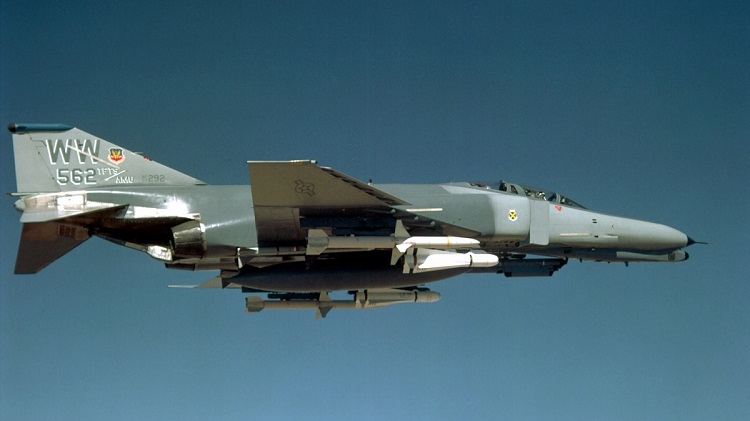
THE BALKANS
In 1994, a new aircraft entered USAF service to assume the Wild Weasel mission. The General Dynamics/Lockheed Martin F-16CJ Wild Weasel – which remains in service today – is based on the F-16C Block-50/52 fighter. Key to the jet’s radar fighting acumen is Raytheon’s AN/ASQ-213 HARM targeting system. This detects emissions from radars across wavebands of 500MHz to 20GHz, providing highly precise targeting information to updated AGM-88C missiles which equip the aircraft. The AGM-88C variant, featuring a new blast-fragmentation warhead and improved radar-seeker, entered service in 1993.
The F-16CJ would be the lynchpin of NATO’s SEAD efforts during Operation Deliberate Force (ODF). Commencing on 30 August 1995, ODF aimed to degrade the Bosnian-Serb Army’s (BSA) ability to continue its genocide against Muslims in Bosnia and Herzegovina. To this end, eight F-16CJs were deployed to Aviano airbase in Italy. Alongside USMC and US Navy Grumman EA-6B Prowler electronic warfare and SEAD aircraft, the F-16CJs fired 56 HARMs against Bosnian-Serb radars throughout the 41-day air campaign.
The F-16CJ’s respite from the Balkans was short-lived. The aircraft returned in 1999 for NATO’s Operation Allied Force (OAF) which aimed to stop the ethnic cleansing in the former Yugoslav province of Kosovo by Serbian military and special police units.
NATO’s OAF air operations took place over a larger area of 113,258km2 encompassing Serbia as well as Kosovo, compared to the smaller 51,129km2 ODF theatre. As a result, NATO had to contend with more numerous and comprehensive Serbian IADS and deployed SAM systems than those of the BSA. As a result, the USAF deployed 12 F-16CJs to Aviano to support the 78-day air campaign which started on 24 March.
IRAQ & LIBYA
The F-16CJ has remained the USAF’s standard air defence suppression aircraft into the 21st century. Following its deployment to the Balkans, the jet also made important contributions to protect US and allied airpower during the 2003 Operation Iraqi Freedom (OIF) effort which ousted Saddam Hussein from power.
1991’s Operation Desert Storm and the subsequent enforcement of no-fly zones above parts of northern and southern Iraq had severally degraded the Iraqi IADS and deployed SAMs, but did not prevent the USAF deploying a force of 24 F-16CJs to help SEAD efforts for OIF. While Iraqi air defences were considered down, they were certainly not out and were treated with a healthy sense of respect by aircrews.
All 24 F-16CJs were based at Al Udeid airbase in Qatar and, alongside their EA-6B counterparts, once again played a vital role in the air campaign, launching 408 AGM-88 missiles. More recently, the F-16CJ supported the US and later NATO-led Operation Odyssey Dawn/Unified Protector over Libya in 2011. Mounted to protect Libyan civilians against forces loyal to Col Gaddafi, eight F-16CJs supported the campaign from Spangdahlem in Germany.
FUTURE WEASELS?
Goldstein says that one of the major contributions the long history of the Wild Weasel mission has made to USAF airpower is the realisation that this is not a support mission but integral to the offensive counter-air (OCA) effort aimed at achieving air superiority and air supremacy. He added that the F-16CJs continues to do, “a fine job.” Given its 1994 service-entry, the F-16CJ probably has about a decade of service left in it.
But will the F-16CJ be the USAF’s last dedicated Wild Weasel aircraft? Possibly as, unlike the US Navy which has forged ahead with its Boeing EA-18G Growler electronic attack and SEAD aircraft, the USAF doesn’t appear to have any plans to develop another dedicated SEAD platform.
What the USAF is doing is looking to configure several of its Lockheed Martin F-35A fighters to perform the SEAD mission. A US$26.7m (A$36.6m) contract awarded to Lockheed Martin by the Pentagon on 2 June will configure these aircraft for air defence suppression, with the modifications to augment F-35As produced during the Lots 14 and 15 – a total of 338 aircraft for US and foreign customers.
Details have been scant on the scope of the upgrade, however. It is known to include structural improvements, most probably to ensure the aircraft can carry the latest Northrop Grumman/Raytheon AGM-88E/F HARM variant. The upgrade may also provide the F-35A’s BAE Systems AN/ASQ-239 integrated self-protection system with software allowing it to detect and precisely locate hostile radars, and to share this information with the missiles. These software enhancements will likely confer the AN/ASQ-239 with an accuracy eclipsing that achievable with the AN/ASQ-213.
Some members of the Wild Weasel community believe the days of the dedicated Wild Weasel platform may be numbered. From the outset, the Weasel mission comprised a mix of sensors, command and control, and execution authority in one aircraft, but the integration of advanced sensors and communications now seen on combat aircraft means that the SEAD mission is less of a dedicated aircraft/aircrew issue.
Inhabited and uninhabited platforms – particularly those with a low radar cross-sections (RCS) – will attack key elements of the enemy IADS architecture and precision weapons from other platforms would clean up the remainder using data from either their own sensors or cued by those of offboard platforms.
But one Weasel insider said that the F-16CJ and F-35A communities have strongly embraced the mission, and the tradition will continue for a while. “However, when historians look to us for the big picture, they’ll assess our key value was in ensuring the surface-to-air threat was added to the Air Dominance/Air Superiority mission area, albeit at a huge expense and (with) lots of thrilling war stories, some better than others, and some unsaid,” he said.
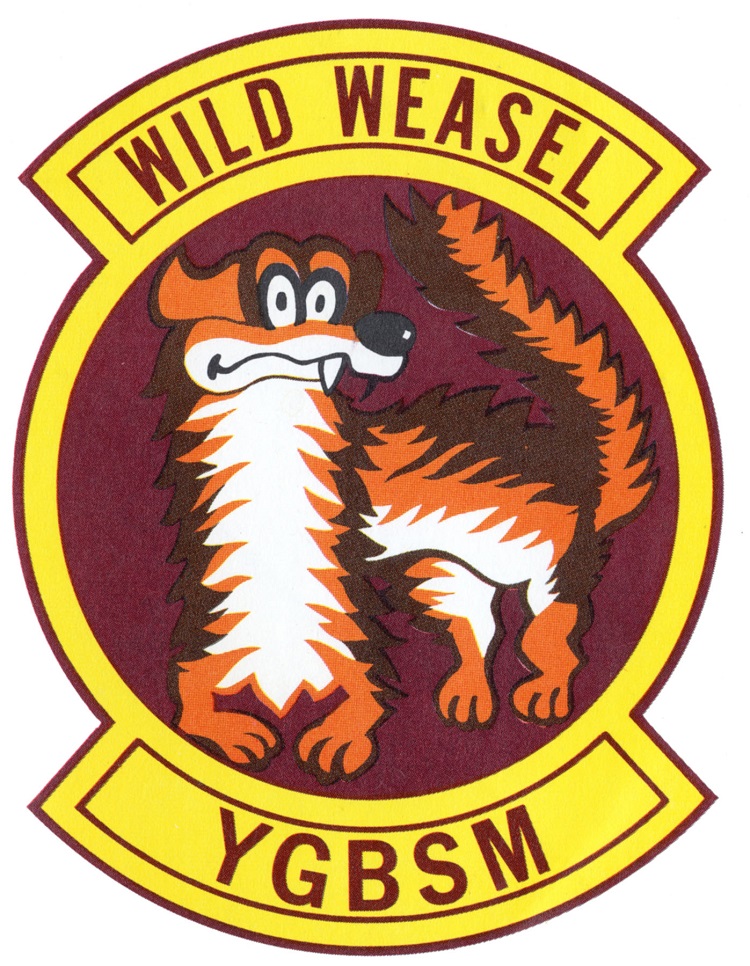
This article appeared in the November-December 2020 issue of ADBR.
